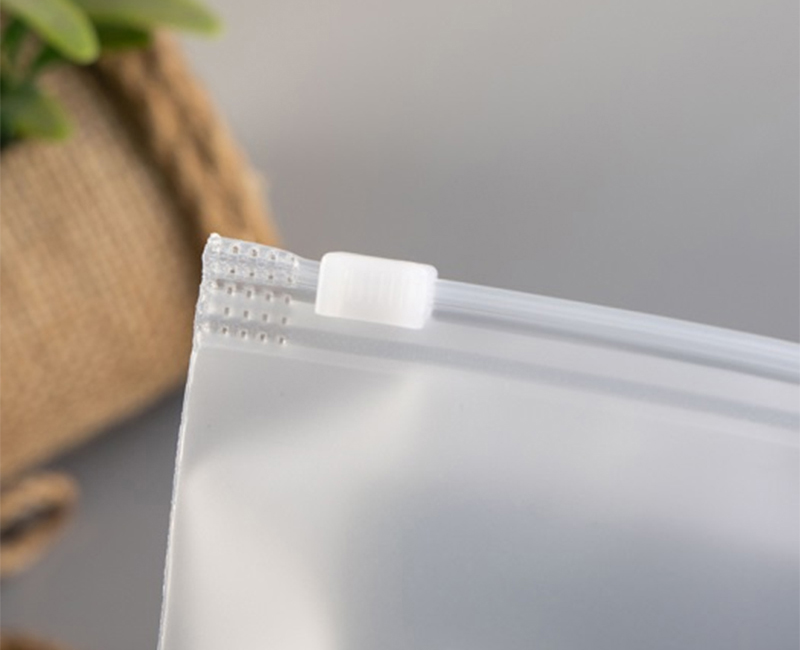Sometimes some customers ask me what is the difference between PPE zipper bag and PE zipper bag? Then zhitula chain bag manufacturer Xiaobian will analyze the difference between the two for you! First of all, let's talk about the nature and use of relevant zipper bags.
The chemical title of polyphenylene ether is poly (2,6-dimethyl-1,4-phenyl ether), PPE (polyphenylene ether) or PPO (polyphenylene oxide).
Also known as polyphenylene oxide or polyphenylene ether, it is a kind of low temperature resistant thermoplastic resin.
1. Modified polyphenylene oxide (MPPO), or MPPE for short, is commonly used in the polyphenylene oxide (PPE) market. Because traditionally, polyphenylene oxide and its modified blend polymer are called PPE (American name) or PPO (Japanese name), hereinafter referred to as PPE or PPO.

LDPE (high pressure low density polyethylene): its products have low density, good transparency and good insulation. It is mainly used in the production of agricultural film (shed film, plastic film), heavy packaging film, shrink film, transparent film, insulating material and cable sheath. It can also be used in processing fields such as injection molding, extrusion and foaming. The product is non-toxic, tasteless and glossy milky white cylindrical particles with good extensibility and electrical insulation. The crystallinity is 55-65% and the crystallization melting point is 108-126 ℃. The product is non-toxic, tasteless and odorless white particles with a melting point of about 130 ℃ and a relative density of 0.941-0.965. It has good heat resistance and cold resistance. Good chemical stability, high rigidity and toughness, good mechanical strength, dielectric properties and environmental stress cracking resistance.
LLDPE (linear low density polyethylene): the product is non-toxic, tasteless and odorless milky white particles, with a relative density of 0.918-0.939. Compared with LDPE, it has the advantages of high strength, good toughness, strong rigidity, heat resistance and cold resistance. It also has good resistance to environmental stress cracking, tear strength, acid, alkali and organic solven
LLDPE (linear low density polyethylene): the product is non-toxic, tasteless and odorless milky white particles, with a relative density of 0.918-0.939. Compared with LDPE, it has the advantages of high strength, good toughness, strong rigidity, heat resistance and cold resistance. It also has good resistance to environmental stress cracking, tear strength, acid, alkali and organic solvents. 2、 Characteristics of polyphenylene ether PPE
PPE is a kind of thermoplastic engineering plastics with excellent comprehensive properties, which is characterized by excellent electrical insulation, water resistance and dimensional stability.
1. Dielectric properties: there is no strong polar group in the molecular structure of PPE resin, which has stable electrical properties and can maintain good electrical properties in a wide range of temperature and frequency. Its dielectric constant and dielectric loss tangent are the smallest of engineering plastics, and are hardly affected by temperature, humidity and frequency. Its volume resistivity is the highest in engineering plastics. The excellent electrical performance of PPE makes it widely used in the production of electrical products, especially high-voltage components, such as line output transformer of color TV.
2. Mechanical and thermal properties: PPE sub chain contains a large number of aromatic ring structures, and the molecular chain is highly sensitive. The resin has high mechanical strength, excellent creep resistance and little effect of temperature change. PPE has high heat resistance, with a glass transition temperature of 211 ℃ and a melting point of 268 ℃.
3. Water resistance: PPE is an amorphous resin. In the normal temperature range, it has little molecular movement, no large polar groups in the main chain, no polarization of dipole moment, and very good water resistance. It is the variety with the lowest water absorption in engineering plastics. After soaking in hot water for a long time, its physical properties still have little decline.
4. It has good flame retardancy and self extinguishing property. The oxygen index of PPE is 29, which is a self extinguishing material, while the oxygen index of high impact polystyrene is 17, which is a flammable material. The combination of the two is of medium flammability. When manufacturing flame retardant grade PPE, halogen flame retardants do not need to be added, and phosphorus flame retardants can be added to reduce environmental pollution.
5. Low shrinkage and stable size; non-toxic.
6. Medium resistance and light resistance: PPE is basically free from corrosion to acid, alkali and detergent. Under stress, mineral oil, ketone and ester solvents will produce stress cracking; Organic solvents such as aliphatic hydrocarbons, halogenated aliphatic hydrocarbons and aromatic hydrocarbons will melt and dissolve. The weakness of PPE is poor light resistance. It changes color and turns yellow when used in sunlight or fluorescent lamp for a long time.
However, the zipper bag of PPE clothing is generally much more transparent than that of PE clothing. Moreover, if PPE is used in clothing packaging, we must pay attention to whether there is powder or no powder. If the packaged clothes are black, it is recommended to use powder free materials instead of powder materials. The transparency of PPE is usually high, which is related to a layer of water surface when extruding film by extruder, while PE does not need water.
Post time: Sep-22-2021

